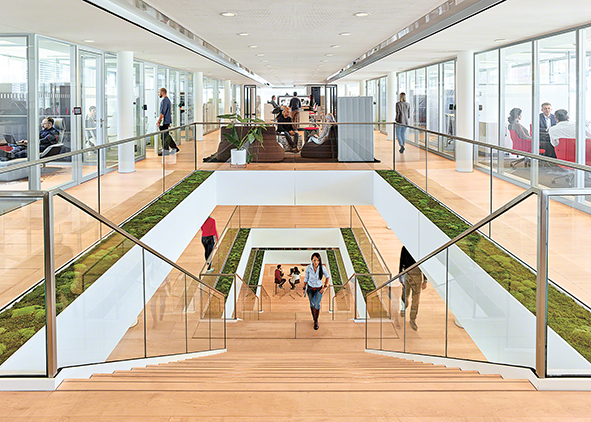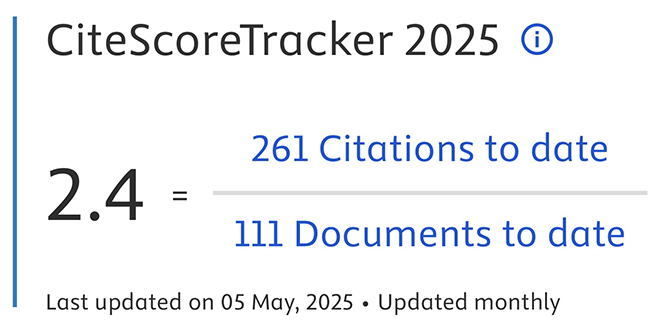Designerly Way of Organizing. The Design of Creative Organization
DOI:
https://doi.org/10.19229/2464-9309/522019Keywords:
design thinking, innovation, creativity, organizational design, design cultureAbstract
In recent years, the Design has expanded its ‘design objects’ to include organization. Specifically, it is within the debate on Design Thinking that this interest emerges, in one of the typologies that characterize it: Creative Confidence. The creative dimension is functional with regard to involving the members of an organization; it allows to overcome the resistance to change and it enables the risk that every creative process entails. The aim is to innovate products and services through greater availability and acceptance, enabled by careful leadership, towards creativity. Design is a creative expression, yet, like creativity itself, it requires the creation and absorption of cultural codes and models; the assumption, in summary, of a ‘design culture’.
Downloads
Article Metrics Graph
References
Amabile, T. and Kramer, S. (2011), The Progress Principle: Using Small Wins to Ignite Joy, Engagement, and Creativity at Work, HBS Press, Boston (MA).
Aon Hewitt (2018), 2018 Trends in Global Employee Engagement. [Online] Available at: www.aon.com/2018-global-employee-engagement-trends/index.html [Accessed 13 March 2019].
Arnold, J. E. (2016, orig. ed. 1953), “Creative Engineering”, in Clancey, W. J. (ed.), Creative Engineering: Promoting Innovation by Thinking Differently, pp. 59-150. [Online] Available at: purl.stanford.edu/jb100vs5745 [Accessed 12 April 2019].
Beaudry, J. (2009), “Design Tools for Social Engagement in Organizations”, in OD Practitioner, vol. 47, issue 3, pp. 15-20.
Binnig, G. (1991), Dal nulla – Sulla creatività dell’uomo e della natura, Garzanti, Milano.
Brown, T. (2009), Change by Design – How Design Thinking Transforms Organizations and Inspires Innovation, Harper Collins, New York.
Brown, T. (2008), “Design thinking”, in Harvard Business Review, vol. 6, pp. 84-92.
Buchanan, R. (2015), “Worlds in the Making: Design, Management, and the Reform of Organizational Culture”, in She Ji Journal, vol. 1, issue 1, pp. 5-21. [Online] Available at: www.sciencedirect.com/science/article/pii/S2405872615000039 [Accessed 22 April 2019].
Buchanan, R. (1995), Rhetoric, Humanism and Design – Discovering Design, University of Chicago Press, Chicago.
Cinque, M. (2016), “Il curriculum nascosto: quale definizione?”, in MEDIC, vol. 24, issue 1, pp. 14-19.
Cook, S. H. (1991), “Mind the theory/practice gap in nursing”, in J Advance Nurs, vol. 16, pp. 1462-1469.
Cross, N. (2006), Designerly ways of knowing, Springer, Berlin.
Csíkszentmihályi, M. (1996), Creativity Flow and the Psychology of Discovery and Invention, Harper Collins, New York.
Dreyfuss, H. (1955), Designing for people, Paragraphic Books, New York.
Dumas, A. and Mintzberg, H. (1989), “Managing design, designing management”, in Design Management Journal, vol. 1, issue. 1, pp. 37-43.
Edwards, A. (2011), “Building common knowledge at the boundaries between professional practices – Relational agency and relational expertise in systems of distributed expertise”, in International Journal of Educational Research, vol. 50, issue 1, pp. 33-39.
Gruber, M., de Leon, N., George, G. and Thompson, P. (2015), “Managing by Design”, in Academy of Management Journal, vol. 58, issue 1, pp. 1-7.
Harman, W. and Rheingold, H. (1986), Creatività Superiore – Come liberare le intuizioni dell’inconscio, Astrolabio, Roma.
Heskett, J. (2002), Toothpicks & Logos – Design in everyday life, Oxford University Press, New York.
Kelley, T. and Kelley, D. (2013), Creative Confidence – Unleashing the Creative Potential Within Us All, William Collins, New York.
Kim, W. C. and Mauborgne, R. (2015), Blue Ocean Strategy – How to Create Uncontested Market Space and Make the Competition Irrelevant, HBR Press, Boston (MA).
Knapp, J. (2016), Sprint – How to Solve Big Problems and Test New Ideas in Just Five Days, Simon & Schuster, New York.
Kolb, D. A. (2014), Experiential Learning: Experience as the Source of Learning and Development, FT Press, London.
Kolko, J. (2015), “Design Thinking Comes of Age”, in Harvard Business Review, September issue, pp. 66-71.
Ito, J. and Howe, J. (2016), Whiplash – How to Survive Our Faster Future, Grand Central Publishing, New York-Boston.
Lave, J. and Wenger, E. (1991), Situated Learning – Legitimate peripheral participation, Cambridge University Press, New York.
Peters, T. (1995), “The Pursuit of Design Mindfulness”, in I.D. Magazine, vol. 5, pp. 74-77.
Lee, S. and Benza, R. (2015), “Teaching Innovation Skills: Application of Design Thinking in a Graduate Marketing Course”, in Business Education Innovation Journal, vol. 7, pp. 43-51.
Liedtka, J. (2018), “Why Design Thinking Works”, in Harvard Business Review, September-October issue, pp. 72-79.
Martin, R. L. (2009), The Design of Business – Why Design Thinking is the Next Competitive Advantage, HBS Press, Cambridge (MA).
Martin, R. L. (2007), The opposable mind – How successful leaders win through integrative thinking, HBS Press, Cambridge (MA).
Morin, E. (1993), Introduzione al pensiero complesso, Sperling e Kupfer, Milano.
Negroponte, N. (1995), Being Digital, Alfred A. Knopf Publishing, New York.
Nussbaum, B. (2013), Creative Intelligence – Harnessing the Power to Create, Connect and Inspire, HarperCollins, New York.
Pisano, G. (2019), "La dura verità sulle culture innovative", in Harvard Business Review Italia, Gennaio/Febbraio, pp. 36-46.
Poincaré, H. (1997), Scienza e Metodo [orig. ed. Science et methode, 1908], Einaudi, Torino.
Polanyi, M. (1958), Personal Knowledge, The University of Chicago Press, Chicago.
Rauth, I., Carlgren, L. and Elmquist, M. (2014), “Making It Happen: Legitimizing Design Thinking in Large Organizations”, in Design Management Journal, vol. 9, pp. 47-60.
Sapelli, G. (1988), Per una cultura dell’impresa, Franco Angeli, Milano.
Savoia, A. (2011), Pretotype it – Make sure you are building the right it before you build it right. [Online] Available at: www.pretotyping.org [Accessed 22 April 2019].
Schein, E. H. (1985), Organizational culture and leadership, Jossey-Bass, San Francisco (CA).
Shön, D. A. (1984), The Reflective Practitioner – How Professionals Think in Action, Basic Books, New York.
Simon, H. A. (1981), The Science of the Artificial, The MIT Press, Cambridge (MA).
Steelcase (eds) (2014), “Wellbeing”, in 360°, issue 8, pp. 11-13. [Online] Available at: www.steelcase.com/content/uploads/sites/10/2015/02/360-wellbeing.pdf [Accessed 5 May 2019].
Verganti, R. (2009), Design Driven Innovation, Changing the Rules of Competition by Radically Innovating What Things Mean, HBS Press, Cambridge (MA).
Vicari, S., Cillo, P. and Verona, V. (2011), “Capacità Creativa e Innovazione – Un modello interpretativo resource based”, in Sinergie, n. 67/05, pp. 123-147.
Zurlo, F. (2015), “Design delle Opzioni e nuovi spazi del lavoro”, in Il Prisma (ed.), Now We Work, McGraw Hill Education, Milano.
Zurlo, F. and Cautela, C. (2014), “Design Strategies in Different Narrative Frames”, in Design Issues, vol. 30, issue 1, pp. 19-35.
Zurlo, F. and Nunes, V. (2016), Designing Pilot Projects as Boundary Objects, Springer, Heidelberg (DE).

Downloads
Published
How to Cite
Issue
Section
License
This Journal is published under Creative Commons Attribution Licence 4.0 (CC-BY).
License scheme | Legal code
This License allows anyone to:
Share: copy and redistribute the material in any medium or format.
Adapt: remix, transform, and build upon the material for any purpose, even commercially.
Under the following terms
Attribution: Users must give appropriate credit, provide a link to the license, and indicate if changes were made; users may do so in any reasonable manner, but not in any way that suggests the licensor endorses them or their use.
No additional restrictions: Users may not apply legal terms or technological measures that legally restrict others from doing anything the license permits.
Notices
Users do not have to comply with the license for elements of the material in the public domain or where your use is permitted by an applicable exception or limitation.
No warranties are given. The license may not give users all of the permissions necessary for their intended use. For example, other rights such as publicity, privacy, or moral rights may limit how you use the material.


















































































